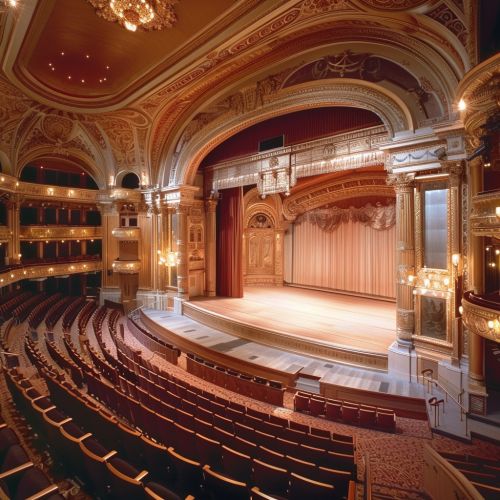Opera
Origins and History
Opera, a form of theatre in which music is a fundamental component, has its roots in the traditions of Western music. The earliest operas, dating back to the 16th century, were composed in Italy. The first recognized opera, "Dafne," was written by Jacopo Peri in 1597, although the music has been lost to history. The earliest surviving opera is Peri's "Euridice," written in 1600.


Development of Opera in Italy
Opera flourished in Italy in the 17th century. The genre evolved from courtly entertainment into a public spectacle, with the opening of the first public opera house, the Teatro San Cassiano in Venice, in 1637. This period also saw the development of distinct opera styles, such as opera seria (serious opera) and opera buffa (comic opera).
Opera in the Baroque Era
The Baroque era was a time of great experimentation and innovation in opera. Composers such as Claudio Monteverdi and Jean-Baptiste Lully pushed the boundaries of the genre, introducing new musical forms and dramatic techniques. Monteverdi's "L'Orfeo" (1607) is often considered the first great opera, while Lully's operas established the French tradition of tragédie en musique, a precursor to grand opera.
Classical and Romantic Opera
The Classical period and Romantic era saw the development of opera into a major art form. Composers such as Wolfgang Amadeus Mozart, Gioachino Rossini, Gaetano Donizetti, Vincenzo Bellini, and Giuseppe Verdi wrote operas that are still performed today. Mozart's "The Marriage of Figaro" and "Don Giovanni," Verdi's "La Traviata" and "Aida," and Rossini's "The Barber of Seville" are among the most popular operas of all time.
Opera in the 20th and 21st Centuries
The 20th and 21st centuries have seen the continued evolution of opera, with composers such as Richard Strauss, Benjamin Britten, Philip Glass, and John Adams creating works that push the boundaries of the genre. Contemporary opera often incorporates elements of modern music, including atonality, minimalism, and electronic music.
Opera Performance
An opera performance involves many elements, including singing, acting, orchestral music, and often dance. The singers, known as opera singers, have specialized training in vocal technique and acting. The orchestra, led by the conductor, plays the instrumental music that accompanies the singers. The stage director oversees the visual elements of the performance, including the sets, costumes, and lighting.
Opera Voices
Opera singers are classified by their vocal range and the roles they typically sing. The main categories are soprano, mezzo-soprano, contralto, tenor, baritone, and bass. Each of these categories can be further divided into subcategories, such as lyric soprano, dramatic soprano, coloratura soprano, and so on.
Opera Houses and Companies
Opera is performed in opera houses, which are specially designed theatres that can accommodate the large orchestras, choruses, and sets that are often required. Some of the most famous opera houses include the La Scala in Milan, the Metropolitan Opera in New York, and the Royal Opera House in London. Opera companies, such as the Vienna State Opera, the Paris Opera, and the San Francisco Opera, produce and perform operas on a regular basis.
Impact and Influence
Opera has had a profound impact on Western music and culture. It has influenced other art forms, including film, theatre, and literature, and has been a source of inspiration for many artists and writers. Opera also plays a significant role in the cultural life of many cities and countries.
See Also
Bel canto Verismo (music) Opera seria Opera buffa Zarzuela Operetta Singspiel Grand opera
